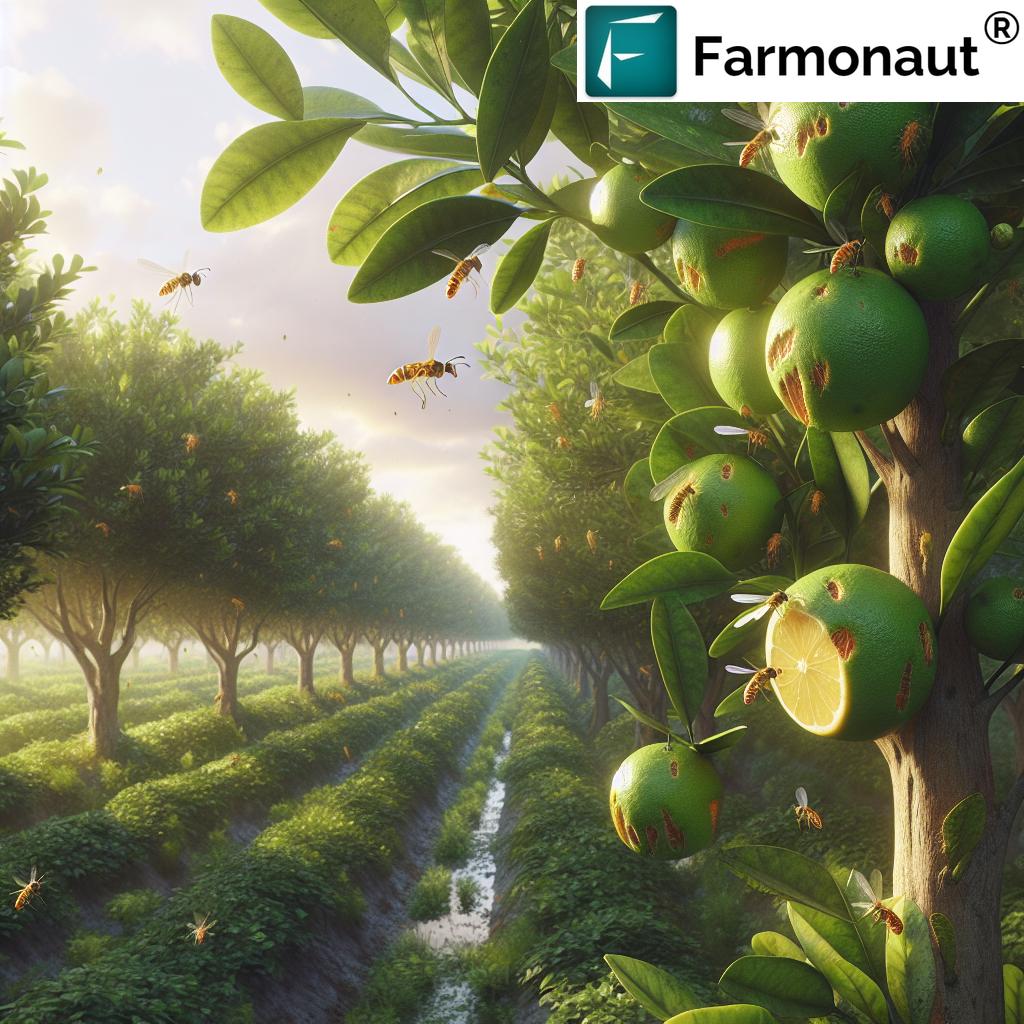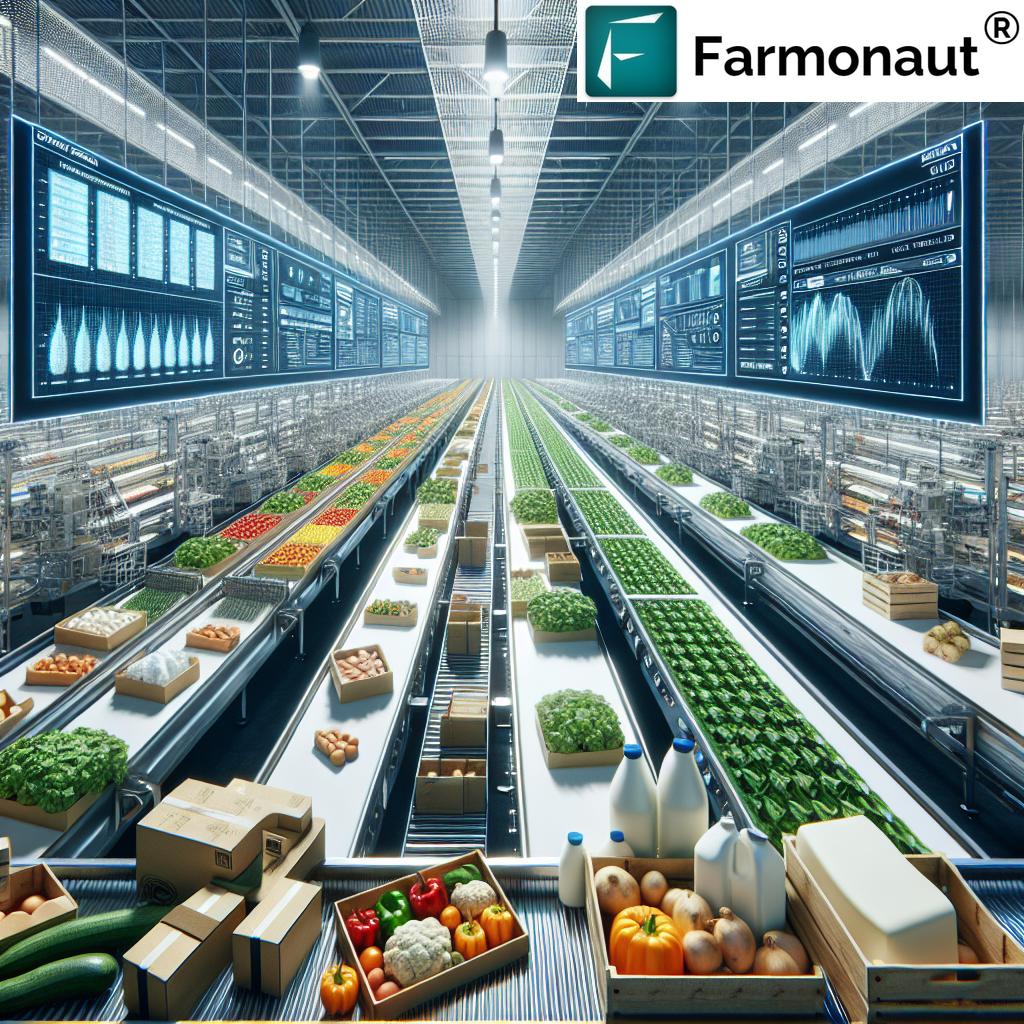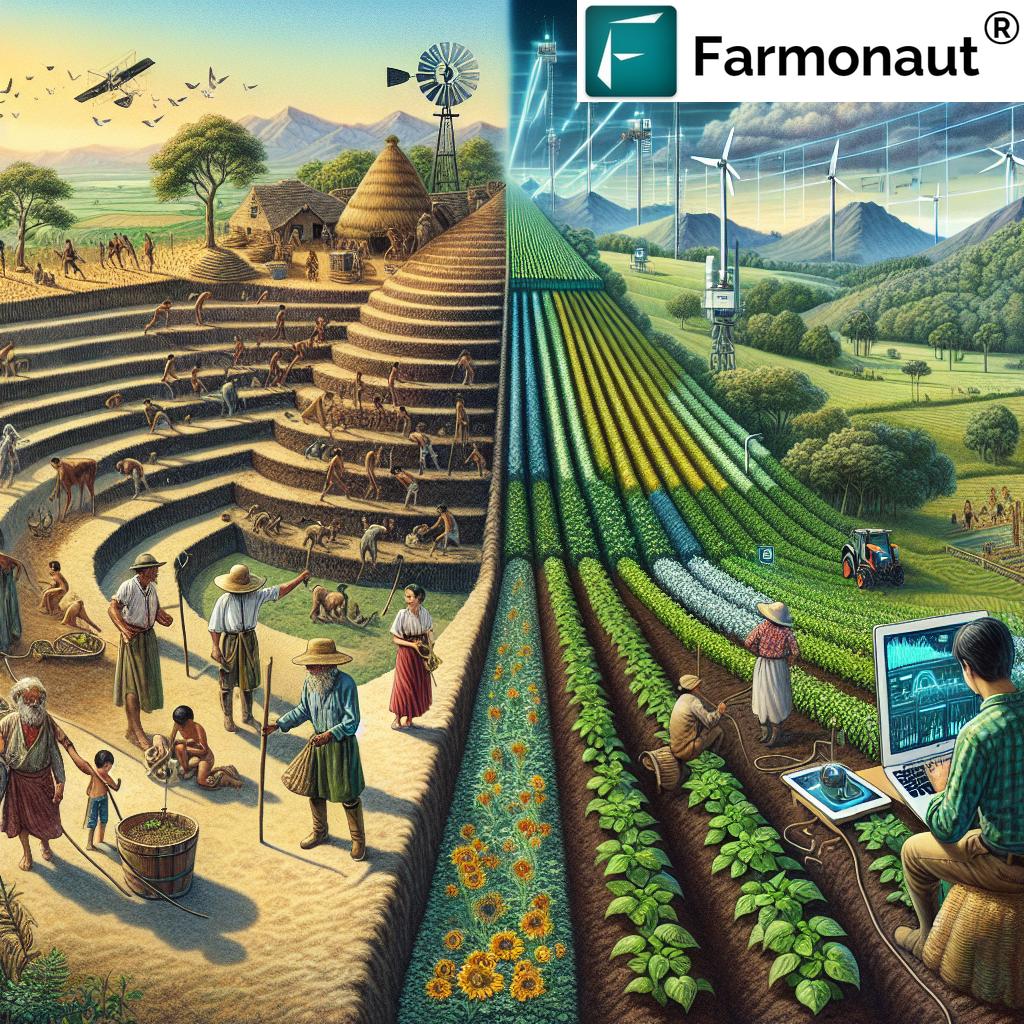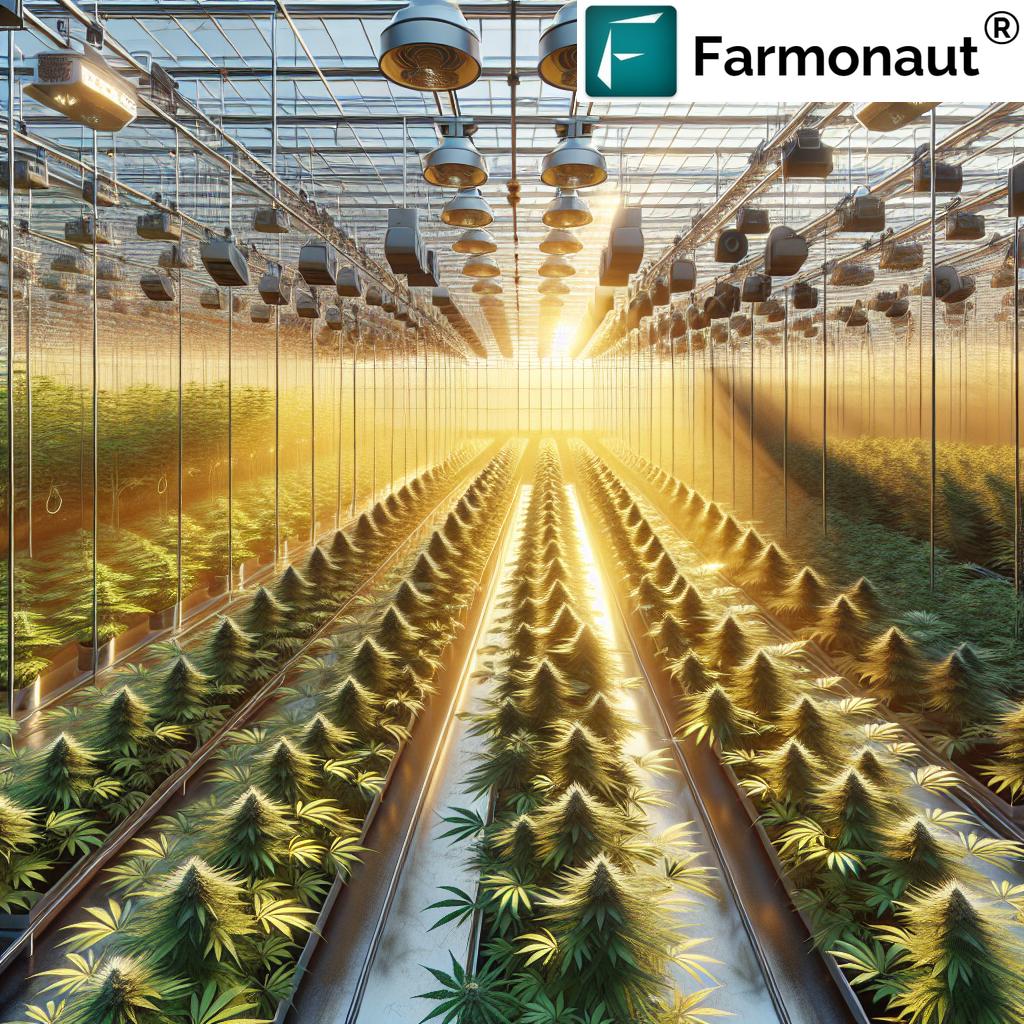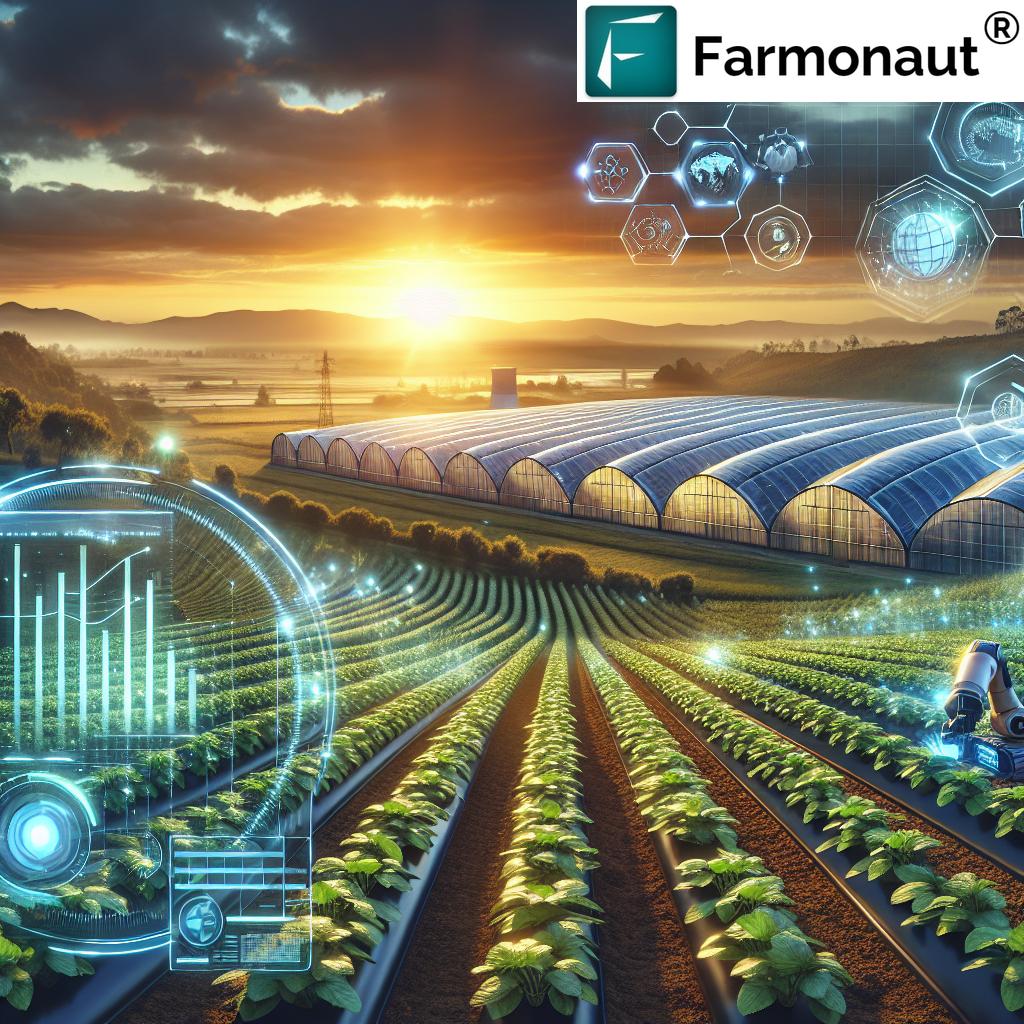AgTech Investment: 5 Shocking Trends Revolutionizing Farming
“Global agtech investments soared to $22.3 billion in 2023, marking a 30% increase from the previous year.”
Introduction
In recent years, agtech investment trends have ignited a revolution in the farming and forestry sectors. Agriculture technology—from precision agriculture solutions to sustainable agriculture technology—is transforming how our food is grown, managed, and delivered. In 2023, global investments surged to an astounding $29.6 billion, setting the pace for unprecedented growth as the world prioritizes sustainability, food security, and economic development (source).
We’re witnessing the digital transformation in agriculture with the integration of artificial intelligence (AI), machine learning, Internet of Things (IoT), automation, advanced data analytics, and new forms of financing. These technologies promise higher productivity, resource efficiency, and environmental stewardship—critical elements for feeding a growing population and safeguarding our planet.
Let’s explore the five most shocking trends revolutionizing farming right now and discover how agtech investment is powering the future of agriculture and forestry.
Why AgTech Investment Matters in 2024
The rapid acceleration of investment in agricultural technologies is more than a market trend; it’s a global imperative. With food production demand projected to increase by over 50% by 2050, farming is under immense pressure to optimize yields, improve resource management, and minimize environmental impact.
Our collective focus on sustainability, resiliency, and productivity is driving the adoption of digital platforms and novel solutions. This transformation helps expand market access, reduce poverty in rural communities, and foster a new era of innovation across diverse agricultural sectors, including forestry.
The stakes are high: agtech not only addresses immediate farming and supply chain challenges but also lays the foundation for food security and environmental stewardship on a global scale.
Overview: The 5 Shocking AgTech Investment Trends
- Precision Agriculture and Digital Transformation
- Regenerative and Sustainable Agriculture
- Alternative Proteins and Food Technology Innovations
- Vertical Farming and Controlled Environment Agriculture (CEA)
- Agri-Fintech and Supply Chain Innovations
“Precision agriculture adoption has grown by 45% worldwide since 2020, transforming data-driven farming practices.”
1. Precision Agriculture & Digital Transformation: The Age of Smart Farming
Focus Keyword: Precision Agriculture Solutions
Precision agriculture solutions use AI, machine learning, and the Internet of Things (IoT) to deliver real-time, data-driven farm management. These technologies conduct continuous monitoring of soil health, moisture levels, and pest activity, enabling farmers to optimize yields, reduce inputs, and promote sustainability.
With satellite imagery and IoT-based sensors, current precision farming platforms can analyze millions of data points—delivering tailored recommendations on irrigation, fertilization, and crop protection. This digital transformation in agriculture drastically increases resource efficiency and productivity, allowing even smallholder farmers access to world-class decision support.
- Crop Monitoring: Platforms like Farmonaut’s satellite-based crop health monitoring provide instant insights on vegetation index (NDVI), soil moisture, and pest hotspots across fields.
- Targeted Interventions: AI in farming enables site-specific application of water, fertilizer, and pesticides, decreasing waste and environmental risk.
- Resource Optimization: Automation and remote sensing cut labor and input costs, increase operational efficiency, and boost ROI.
- Timely Insights: Rapid alerts help us manage weather risks, irrigation schedules, and disease outbreaks proactively.
With the rise of platforms like Farmonaut, farmers get affordable, actionable insights for even the most complex operational challenges—made accessible via dedicated Android, iOS, and web apps.
Want to build your own satellite-based crop monitoring or analytics platform? Explore Farmonaut’s API or read the Satellite & Weather API Developer Docs.
2. Regenerative & Sustainable Agriculture: Healing the Land
Focus Keyword: Regenerative Agriculture Practices
Regenerative agriculture practices encompass a holistic approach to soil and ecosystem management. These methods—like crop rotation, reduced tillage, and transitioning to bio-based fertilizers—are designed to restore soil health, sequester carbon, and foster biodiversity.
- Soil & Carbon Monitoring: AI & analytics platforms bring immediate, field-level insights into soil organic carbon, moisture status, and microbiome health, enabling accurate carbon footprint tracking.
- Biodiversity: Data-driven crop rotation and cover cropping boost pollinator habitats, combat erosion, and enhance nutrient cycling.
- Climate Smart: By adopting regenerative interventions, farmers bolster their climate resilience and unlock access to green finance options.
Platforms like Farmonaut help facilitate these transitions by providing satellite-driven analytics on soil health, crop performance, and historical land use—empowering us to embrace the future of sustainable agriculture technology with confidence.
Learn more about Farmonaut’s carbon monitoring and sustainability features: Farmonaut Carbon Footprinting
3. Alternative Proteins & Food Technology Innovations
Focus Keyword: Alternative Proteins
The global shift towards sustainable, healthy eating habits accelerates the demand for alternative proteins—spurring both investment and technological innovation. Consumers are demanding ethical, eco-friendly food sources. Investment pours into companies developing plant-based meats, lab-cultured proteins, and nutrient-rich food alternatives.
- Market Growth: The alternative protein industry is projected to reach new highs, with established market leaders and startup innovators drawing significant venture capital and scaling production capabilities.
- Sustainability Impact: Alternative proteins consume fewer resources (water, energy, arable land) and generate substantially less greenhouse gas than conventional meat. Their rise supports environmental stewardship goals globally.
We’re entering a new chapter in food technology, where advances in bioprocessing, fermentation, and cellular agriculture foster growth in sustainable, scalable food solutions. This trend is closely monitored via data analytics platforms, quantifying the impact on supply, demand, and blockchain-based traceability—securing consumer confidence in the integrity of these innovations.
Benefit from full supply chain transparency in the food and textile sector with Farmonaut’s blockchain traceability: Farmonaut Product Traceability
4. Vertical Farming & Controlled Environment Agriculture (CEA): Upward Growth
Focus Keyword: Vertical Farming Innovations
Urbanization and dwindling arable land have fueled demand for vertical farming innovations and controlled environment agriculture (CEA). By stacking crops in tightly controlled indoor environments—often in the heart of cities—we can produce fresh, nutritious food year-round with minimal resource input.
- Efficiency & Resilience: Hydroponic, aeroponic, and aquaponic systems, powered by smart analytics and AI, achieve remarkable water and energy efficiency, while allowing precise monitoring and automation.
- Market Expansion: The global indoor farming tech market is forecast to soar from $37 billion in 2024 to $68 billion by 2029, showcasing the massive upside of this agtech investment trend.
- Climate Independence: Indoor farms insulated from external climate shocks boost urban food security and meet rising consumer demand for locally grown produce.
We can harness satellite-based and IoT-enabled data platforms for optimizing resource flows, tracking yields, and pre-empting crop cycle risks in CEA—taking vertical farming to scalable commercial viability.
Effortlessly manage large- and small-scale plantations with Farmonaut’s advanced farm management platform: Farmonaut Large Scale Farm Management
5. Agri-Fintech & Supply Chain Innovations: Financial Inclusion for Farmers
Focus Keyword: Agri Fintech Solutions
A significant barrier for many farmers worldwide is access to capital and reliable markets. Agri fintech solutions aim to bridge this gap, offering microloans, insurance products, and blockchain-powered supply chain services built specifically for the agricultural context.
- Microloans & Insurance: Digital platforms enable near-instant loan approvals and insurance underwriting, reducing bureaucracy and empowering smallholder farmers to invest in improvements or recover after losses. Farmonaut’s satellite verification enables lenders and insurers to remotely verify fields and claims, minimizing fraud and mistakes.
- Blockchain Supply Chains: End-to-end product traceability (from farm to store) increases transparency, aids regulatory compliance, and prevents supply chain fraud.
- Market Linkages: Producers gain better access to fair and competitive markets, improving living standards and driving economic growth in rural communities.
With agri-fintech innovations and transparent blockchain-based supply chains, smallholder farmers stand to benefit from increased market participation and improved financial security.
Speed up loan approval and insurance claim processes via satellite-based field verification with Farmonaut’s agrifinancial modules: Farmonaut Crop Loan & Insurance Solutions
Farmonaut’s AgTech Solutions: Making Agriculture Smarter
At the forefront of the AgTech revolution stands Farmonaut, an agriculture technology leader making precision agriculture affordable and scalable for every farmer and agribusiness. Through our advanced use of satellite imaging, AI/ML analytics, and integrated blockchain solutions, we empower users globally to address key challenges facing modern farming and forestry.
- Plug-and-play access for all: Farmonaut is accessible via web, Android, and iOS platforms, extending precision agriculture solutions to individual farmers, large plantations, governments, NGOs, and corporate supply chain managers.
- Key features:
- Satellite-driven crop health monitoring (web | mobile)
- Blockchain product traceability for supply chain authenticity
- AI-based advisory systems: Personalized crop, weather, irrigation, and input management
- Carbon footprinting tools to track and reduce emissions
- Fleet & resource management modules for cost-effective operations
- APIs for enterprise and developers (learn more)
Our business model is built on transparent, affordable subscriptions that scale with your needs—see the pricing table for easy onboarding!
Impacts: How AgTech Investment Trends Are Transforming Agriculture & Forestry
The infusion of capital and breakthrough agriculture technology yields tangible, positive impacts across food production, forestry, and rural economies:
- Enhanced Productivity: Real-time monitoring and AI-powered analytics optimize field operations, maximize yields, and reduce waste.
- Sustainability Gains: Regenerative agriculture practices, supported by digital platforms, help restore soil, sequester carbon, and protect biodiversity in alignment with global climate goals.
- Economic Growth: Agri-fintech solutions democratize access to capital and markets, reducing rural poverty and supporting thriving local economies.
- Food Security: Innovations such as alternative proteins and CEA address supply chain disruptions and resource scarcity, ensuring reliable food sources for the future.
- Transparency & Trust: Blockchain-based traceability in supply chains builds consumer confidence and strengthens regulatory compliance.
Challenges and Considerations on the Road to AgTech Transformation
While the benefits of agricultural technology are stark, several challenges persist:
- High Implementation Costs: Adopting advanced technologies can be cost-prohibitive for smallholder farmers lacking investment capital.
- Data Privacy & Security: Large-scale data collection raises risk of data misuse; robust cybersecurity frameworks and privacy protocols are critical.
- Regulatory Delays: Rapid innovation often outpaces regulation, creating uncertainty for emerging solutions or supply chain traceability initiatives.
- Digital Literacy: Effective use of digital platforms requires basic (and sometimes advanced) technology skills, highlighting an urgent need for farmer education and training.
At Farmonaut, we’re committed to democratizing technology access—delivering cost-effective, intuitive tools designed for all scales of farming and all levels of digital literacy.
For forestry and plantation management, explore Farmonaut’s solutions for crop, plantation, and forest advisory providing sector-wide operational insights.
Trends Comparison Table: AgTech Investment Trends at a Glance
| Trend Name | Brief Description | Est. 2024 Global Market Value (USD) | Projected CAGR (2024–2028) | Example Technologies |
|---|---|---|---|---|
| Precision Agriculture & Digital Transformation | AI, IoT, and machine learning-driven solutions optimize resource management and yields | $12.9 Billion | 13–15% | Satellite imagery, IoT sensors, AI analytics platforms, automation tools |
| Regenerative & Sustainable Agriculture | Practices focused on soil health, carbon sequestration, biodiversity | $6.1 Billion | 10–12% | Soil carbon monitoring, data analytics, eco-friendly input tracking |
| Alternative Proteins & Food Technology | Plant-based & lab-grown proteins, sustainable food innovations | $8.5 Billion | 16–20% | Bioreactors, fermentation, blockchain traceability, cellular agriculture |
| Vertical Farming & Controlled Environment Agriculture | Stacked, indoor cultivation with climate and light control | $37 Billion* | 13–15% | Hydroponics, aeroponics, AI greenhouse automation, energy efficiency tech |
| Agri-Fintech & Supply Chain Innovations | Digital microfinance, insurance, and blockchain for supply chain transparency | $4.2 Billion | 18–22% | Blockchain supply chains, microloan platforms, satellite verification APIs |
*Includes projected CEA and indoor farming systems market.
FAQ: AgTech Investment & Technology
What is AgTech and why is it so important?
AgTech—short for agricultural technology—encompasses advanced solutions and innovations designed to improve productivity, sustainability, and profitability in farming and forestry. Its adoption is critical for securing future food supplies, minimizing environmental impact, and creating resilient agricultural systems worldwide.
How do precision agriculture solutions help farmers?
Precision agriculture solutions harness data from satellites, IoT sensors, and AI platforms to optimize irrigation, fertilization, and disease management. This means higher yields, reduced input costs, and environmentally sound farming practices—even under extreme climatic conditions.
What are the environmental benefits of regenerative agriculture practices?
Regenerative agriculture practices restore soil health, increase biodiversity, and capture carbon from the atmosphere. These practices not only make farming more sustainable but also strengthen the farm’s ecosystem and resilience to climate extremes.
How does vertical farming differ from traditional farming?
Vertical farming uses stacked growing systems in controlled indoor environments, producing crops year-round regardless of weather. This method consumes less water and land, slashes pesticide needs, and brings food production closer to urban markets.
What is the role of agri-fintech in modern agriculture?
Agri-fintech refers to financial technologies tailored for agriculture, such as microloans, insurance, and blockchain-based supply chain management. They make financing, market access, and fraud prevention more efficient and equitable for all farming communities.
How does Farmonaut enable affordable precision agriculture worldwide?
Farmonaut leverages satellite imagery, AI-driven analytics, and blockchain-based services accessible via web and mobile apps. Its pricing is designed so that smallholder farmers, large agribusinesses, and government agencies can all access affordable, scalable, real-time digital management for crops, soil, and sustainability programs.
Where can I learn about Farmonaut’s subscription options or deploy its API?
Farmonaut offers flexible subscriptions and developer options easily explored via our pricing table and API documentation. You can download the app today, see subscription pricing, and explore the API & developer docs.
Conclusion: Shaping the Future of Agriculture—with AgTech Investment
As the digital wave sweeps through global agriculture, agtech investment trends are enabling a fundamental transformation. Through precision agriculture, regenerative practices, food technology innovation, urban farming, and fintech solutions, we are witnessing not just increased productivity—but a reimagining of our relationship with land, food, and climate.
Farmonaut stands out as a driving force in this revolution, providing advanced, satellite-powered, and AI-enabled management tools for all—from smallholder fields to massive agri-corporate estates. Whether you seek to monitor your crops, track supply chain authenticity, or support climate-positive farming, the technology and insights are now in your hands.
For every farmer, agribusiness, researcher, and policymaker, ongoing investment in agriculture technology is essential. Together, by overcoming adoption barriers and prioritizing education, transparency, and accessibility, we can realize the full potential of agtech to build resilient, sustainable, and abundant rural—and urban—communities all over the world.
Ready to shape your own future in smart, sustainable agriculture? Download the Farmonaut app or reach out to our team for more on digital transformation in agriculture.
Farmonaut Subscription Details
Flexible plans for every farm, agribusiness, and corporate client. Get started with digital transformation in agriculture—view the full subscription table below:






